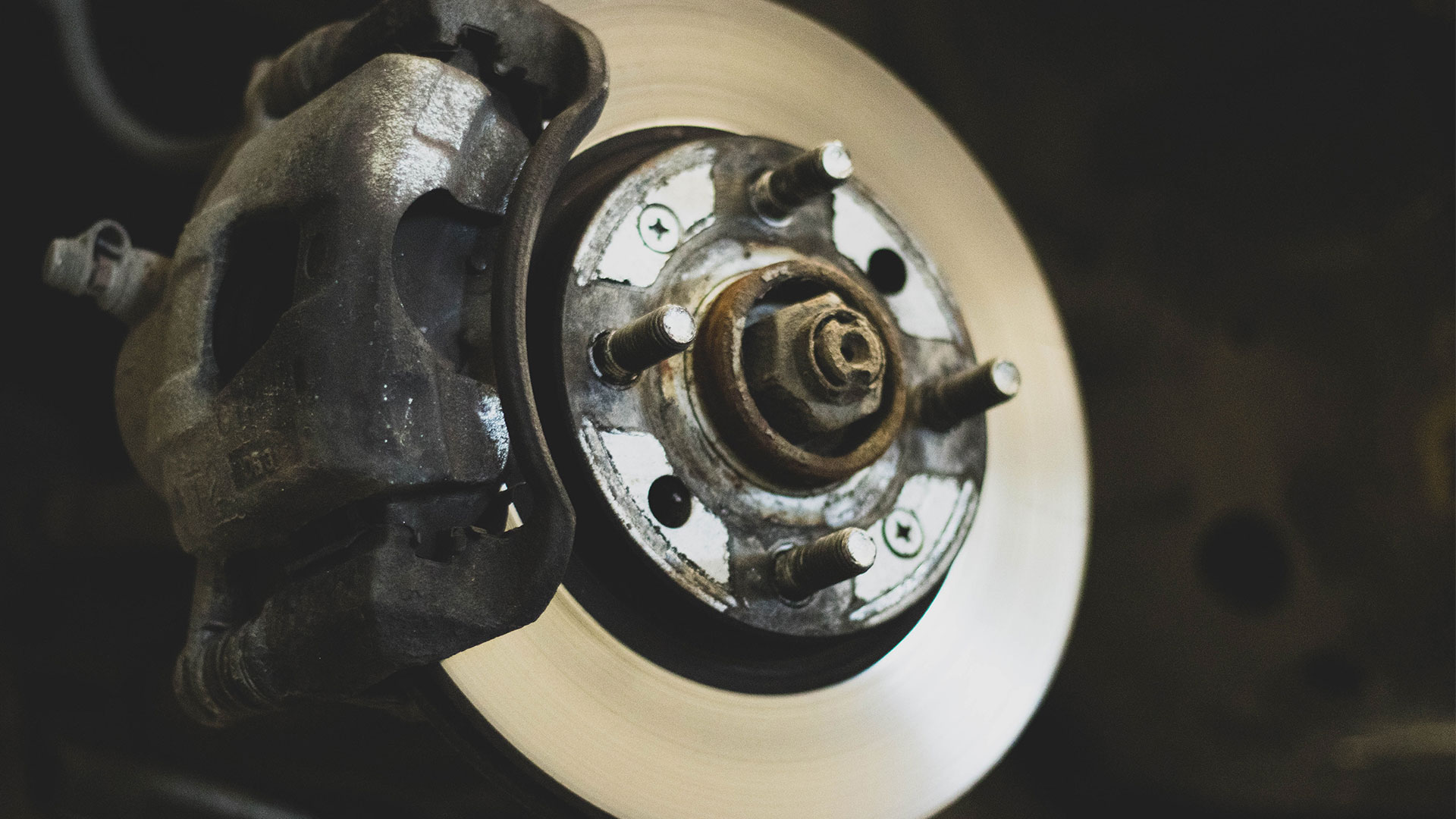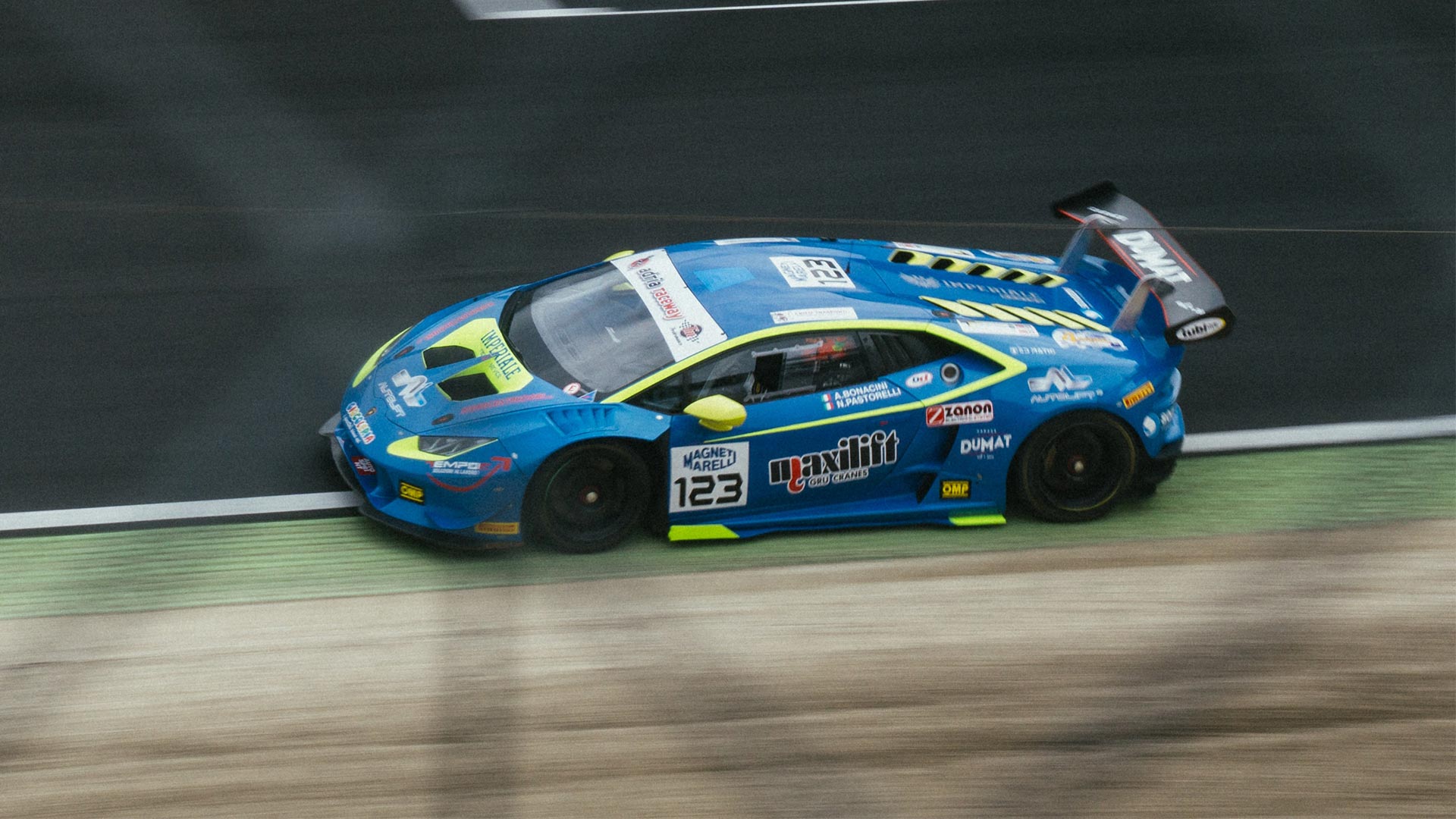'Braking' Down Our Brakes: Race Cars vs. Standard Cars
23rd November 2021
Track days are for pushing sports and race cars to the limit.
Only a fool, or a TopGear presenter, would gun a standard road car around the likes of Brands Hatch or Donnington Park. Image and ambition aside, there’s another very good reason for that - brakes.
Put simply, brake systems found on an everyday run-around will wilt when exposed to extreme braking in race like situations. In this article, we’ll explore the subtle and not so subtle differences between racing and standard braking systems.
How We Brake
Your average brakes are designed for average journeys, be it the daily commute, or a trip to the local supermarket.
The system comprises four brakes, one for each wheel. Typically, the braking is carried out by small rotors, though drums are also used, particularly upon the rear axle.
Said rotors and drums are made from grey cast iron. They function simply but effectively, converting kinetic energy from the moving car into heat energy, this courtesy of the friction born from brake pads and brake discs abrading together.
Whenever a brake pad rubs against a disc (or drum) we get that all-important friction which gradually serves to bring a car to a halt.
Hydraulic fluid pressure is generated when a brake pedal is pressed, clamping the brake pads against the brake discs with enough gusto to slow all four wheels.
But you knew all that. You’re reading this blog to discover how racing brakes differ, right? Well, quite significantly as it happens.
Racing Brakes

It goes without saying, brakes are critical safety systems and their presence can prevent serious injury. This is never more true than in competitive racing.
Higher speeds necessitate greater braking decelerations, increased torques and a higher resistance to soaring temperatures. So, high performance brakes are vital for anyone looking to channel their inner Lewis Hamilton.
How are these systems different?
Standard brakes would be found wanting in this environment. Excessive wear and heat would render the pad/brakes inoperable after just a few laps.
Rotors
Rotors of much greater diameters and thickness are used for racing applications. These components transmit higher braking torques and have a greater capacity to remove heat. Rotors in the order of 400 mm diameter are not uncommon.
The chemical composition and solidification microstructures of these rotors are optimised on an individual part basis. This provides the maximum strength and thermal fatigue resistance, affording drivers complete confidence in braking ability and reliability alike.
MAT Foundry has more than 25 years of experience in the microalloying necessary to achieve the optimum durability in iron racing rotors.
Molybdenum is routinely used to facilitate exceptional strength at elevated temperatures. Crucially, such materials are proven to withstand blistering temperatures synonymous with race activity. They will neither warp nor overheat when the going gets tough.
Ventilation channels are formed using sand cores. These cores are made using complex core-making technology, focused on geometrical accuracy and surface finish. This enables MAT to produce intricate vane geometries for maximum cooling and customer flexibility.
Racing rotors of this size are machined to the tightest of tolerances so as to ensure the surfaces run true, maintaining maximum braking performance in the process.
Any configuration of slots and cross-drilling is possible to optimise mass, braking performance and cooling.
A specialised heat treatment also reduces inherent casting stresses within the rotor, allowing for maximum tolerance attainment when precision machining.
Carbon-ceramic brake rotors are even used for some or the more specialist applications. This specialist material is heat resistant up to 1000 °C and lasts up to 60 times longer than a grey iron equivalent.
Pads

As with racing rotors, pads are on the larger scale to cater not just for higher pressures, but increased wear rates and temperatures too.
Pads can be made using a range of organic or ceramic formulations. Ceramic pads can be more reliable and harder-wearing, whilst organic pads can generate modest friction without excessive heat. Each formulation would be tailored and carefully selected for the racing application in question.
It may surprise you to learn that additives like copper are frequently blended with ceramic brake pads to further enhance durability.
Typical characteristics of a racing pad are:
- Temperature stability
- Good bite
- Stable friction
- Good modulation
- Release characteristics
Drilled and slotted rotors require different friction formulations to achieve the desired braking performance.
Callipers
Racing callipers must support greater loads and exhibit added strength. They must do so whilst minimising weight.
Racing callipers are designed to be strong and lightweight by adding and removing material where necessary.
Several materials exist for racing calliper manufacture, but aluminium remains at the forefront. In fact, Bugatti have the highest performance calliper available, designed via topology-optimisation and the 3D printing of titanium.
Fixed callipers are used which feature pistons that clamp from both sides of the disc, as opposed to one for standard brakes. To apply greater braking torque and clamping pressure, a series of pistons are utilised. Any number between 4, 6 or 8 can be deployed.
For brake operation amid high temperatures, supplementary cooling air is funnelled towards the brakes by hood scoops. Indeed, overall stopping power is positively influenced by cooling.
Racing vehicles regularly encompass two separate master cylinders, operating the front and rear brakes separately. This configuration affords drivers more control in a process better known as brake biasing.
For context, a standard Formula 1 car relies on brakes that will drop speeds from 200 mph. Drivers will race flat out at 6g yet demand the ability to shave off 40 mph in as little as four seconds. These brake discs will however only last 250 miles, at a push.
Customisation
Those with the biggest budgets can go further with advanced technology. For professional racing teams this will involve the addition of yet more braking sensors intended to give those in the hotseat an edge by way of more data and control. In the heat of battle, the smallest margins matter.
The ventilation and cooling systems used in motorsport are also far superior to anything everyday drivers are accustomed to. They work to an optimum temperature whereby any risk of cracks or thermal shock are duly mitigated against. You don’t need us to tell you how expensive and painstaking these are to implement, not to mention repair…
That’s why experienced engineers are on-hand, guarding against the dreaded orange glow, overheated and faded pads, as well as cracked rotors.
With every base covered, even brake fluid is refined. Race cars require a higher specification of fluid due to the range of temperatures and pressures involved.
Considerable variations exist in both the construction and configuration of brakes for road and race vehicles. Just as the former will struggle on a track day, the latter will prove equally unsuitable when rotors suffer excessive wear from daily driving.
So if you’re taking to the track, be sure to do so equipped with high performance brakes. You won’t have much of a racing experience without.

